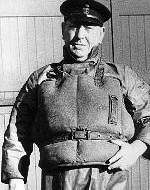Great Yarmouth History
The "Louise Stephens"
In 1939 the lifeboat 'Louise Stephens' was stationed at Gorleston-on-Sea. She was a shallow draft Watson, designed for use on the sand banks of the east coast and was one of only three RNLI lifeboats designed to be launched from the beach. During her career with the RNLI she was launched 305 times and saved 177 lives at sea. Sold out of service in 1974, she became a fishing boat named the Tyne Star. At the present time she is waiting to be sold by Nelson Boats, an American company specialising in the sale of old lifeboats

In 1940 along with eighteen other lifeboats and numerous small ships from all over Britain 'Louise Stephens' took part in the evacuation of the BEF from Dunkirk. She was taken over by a naval crew for this hazardous duty. Her exploits at Dunkirk were generally not recorded but an officer of the RNVR wrote afterwards to the Institution:- "I took the Gorleston and Great Yarmouth lifeboat across to Dunkirk on two nights. Her performance was a revelation and a delight. She came back with a hole in her after endbox".
One known incident occurred whilst the Loiuse Stephens was operating off the beaches east of Dunkirk. The Southwold lifeboat, Mary Scott's engine broke down and could not be restarted. The only course open to Sub-Lieutenant Stephen Dickenson, her Commander (a former RNLI Inspector of Lifeboats) was to beach and abandon her. Then together with his crew he came home to Dover in the Louise Stephens.
In 1941 A Silver Medal was awarded to Coxswain Charles Johnson, pictured above who was coxswain from 1934-1946, and a Bronze Medal to Motor Mechanic G.F. Mobbs for a service to six ships in a convoy that were wrecked on Wednesday 6th August 1941. (See experiences of James Allen) In this service 119 people were rescued by the Cromer, Gorleston, Sheringham and Lowestoft lifeboats.